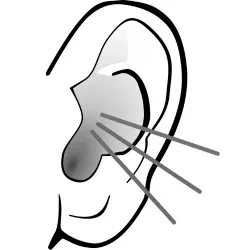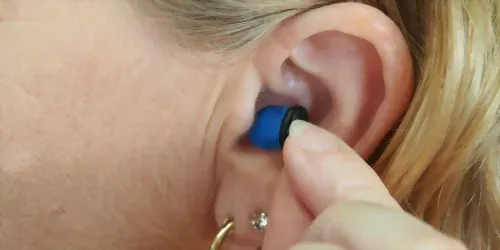Foam earplugs are a common solution for individuals seeking to protect their hearing or ensure a quiet environment. While they are widely used for their convenience and effectiveness in noise reduction, they are not without their drawbacks. This article will delve into the less-discussed disadvantages of foam earplugs, providing a comprehensive understanding of the potential issues associated with their use.
Key Takeaways:
- Foam earplugs can cause earwax buildup and potential blockages.
- Overuse or improper use of foam earplugs may lead to ear infections or discomfort.
- Environmental concerns arise from the disposable nature of foam earplugs.

Potential for Earwax Buildup
One of the primary concerns with the use of foam earplugs is the potential for earwax buildup. When inserted into the ear canal, foam earplugs can push earwax deeper into the ear, leading to blockages. This accumulation not only affects hearing but can also cause discomfort and, in severe cases, may require medical intervention to remove the impacted earwax.
Moreover, individuals who use foam earplugs regularly may find that their natural earwax expulsion process is disrupted. The ear is designed to self-clean, with earwax carrying debris out of the canal. However, frequent earplug use can hinder this process, exacerbating the buildup issue.
Risk of Ear Infections
Another significant disadvantage of foam earplugs is the increased risk of ear infections. Earplugs can create a warm, moist environment in the ear canal, which is conducive to bacterial and fungal growth. This can lead to outer ear infections, also known as swimmer's ear, which can be quite painful and may require antibiotic treatment.
In addition to promoting infections, the material of foam earplugs can irritate the delicate skin of the ear canal, especially if the earplugs are not properly cleaned or are reused excessively. This irritation can lead to itching, discomfort, and even sores within the ear.

Comfort and Fit Issues
While foam earplugs are designed to be one-size-fits-all, the reality is that ear canal sizes and shapes vary greatly among individuals. For some, foam earplugs may be too large and exert excessive pressure on the ear canal, causing pain and discomfort. For others, they may be too small and fail to provide adequate noise reduction or fall out easily.
Additionally, the compress-and-insert method required for foam earplugs can be difficult for some users to master. If not done correctly, the earplugs may not expand fully within the ear canal, compromising their effectiveness and potentially leading to discomfort.
Impaired Hearing and Communication
While the primary function of foam earplugs is to reduce noise, they can sometimes work too well, muffling sounds that users may want or need to hear. This can be particularly problematic in work environments where communication is essential, or in situations where being aware of one's surroundings is crucial for safety.
Furthermore, individuals who rely on foam earplugs for prolonged periods may find that their ability to discern sounds becomes dulled over time, even when not wearing the earplugs. This can have implications for one's overall auditory health and the ability to engage in conversations or respond to auditory cues.
Environmental Concerns
Foam earplugs are typically disposable and not biodegradable, which raises environmental concerns. The single-use nature of these products means that they contribute to landfill waste and can be harmful to wildlife if not disposed of properly. With millions of earplugs used and discarded daily, the environmental impact is not negligible.
Moreover, the production of foam earplugs involves the use of non-renewable resources and chemicals, which further contributes to their environmental footprint. As society becomes more conscious of sustainability, the disposable aspect of foam earplugs is increasingly seen as a disadvantage.

Summary
Foam earplugs, while useful for noise reduction, come with a range of disadvantages that users should be aware of. From the potential for earwax buildup and ear infections to comfort issues and environmental concerns, the drawbacks of foam earplugs are significant. It is important for individuals to weigh these factors when choosing hearing protection and to consider alternative options if necessary.

FAQs
Can foam earplugs cause permanent hearing damage?
Improper use of foam earplugs, such as inserting them too deeply or using them excessively, can potentially lead to hearing damage. However, when used correctly, they are generally safe and effective for temporary noise reduction.
How often should foam earplugs be replaced?
Foam earplugs should be replaced regularly to prevent ear infections and maintain hygiene. It is recommended to use a new pair each time or to follow the manufacturer's guidelines if they are designed for multiple uses.
Are there eco-friendly alternatives to foam earplugs?
Yes, there are eco-friendly alternatives to disposable foam earplugs, such as reusable silicone or wax earplugs, which can be cleaned and used multiple times, reducing environmental waste.
Can they block out ALL noise?











